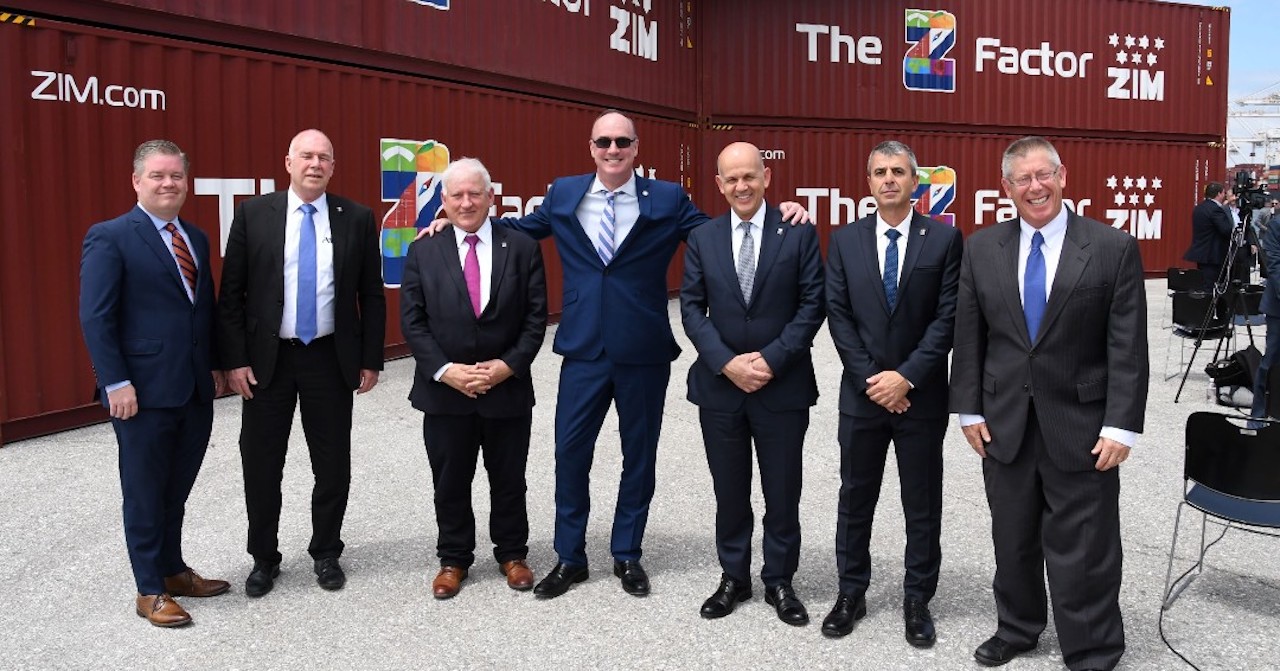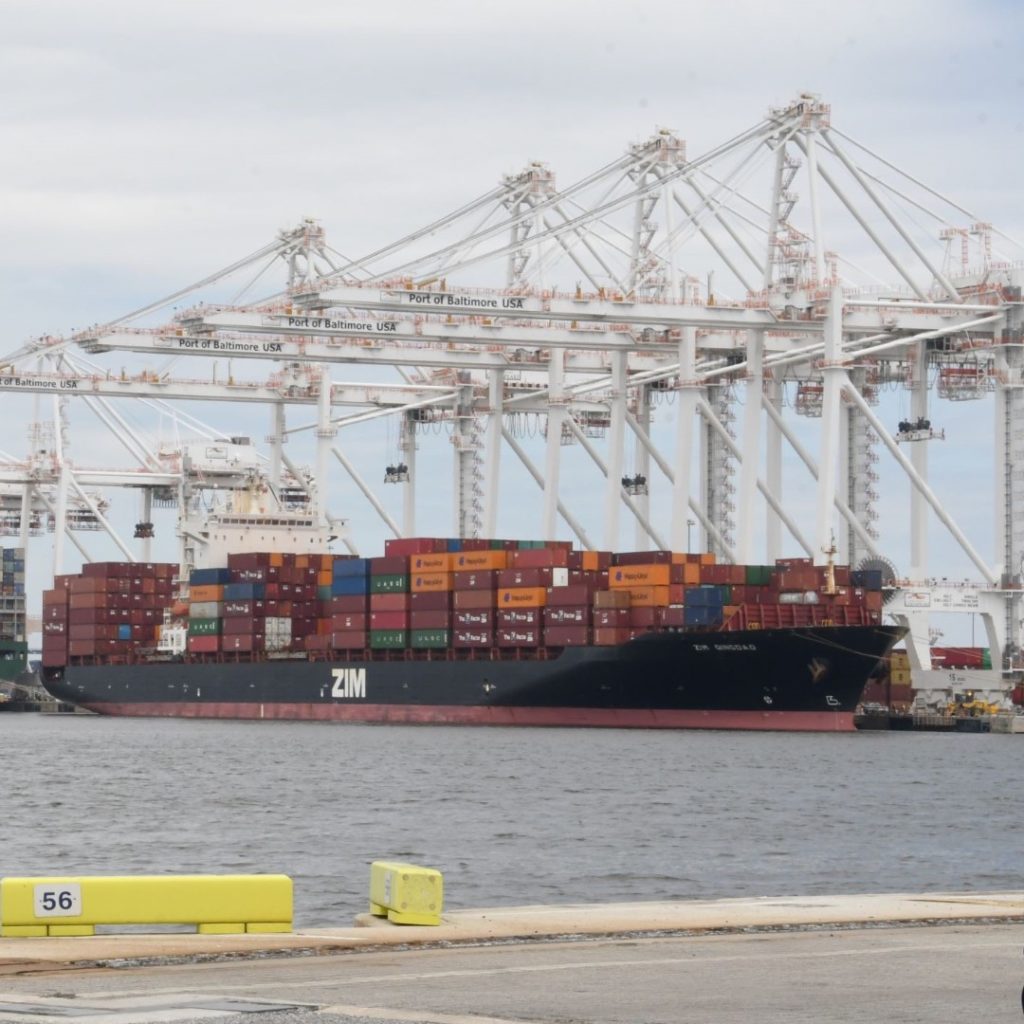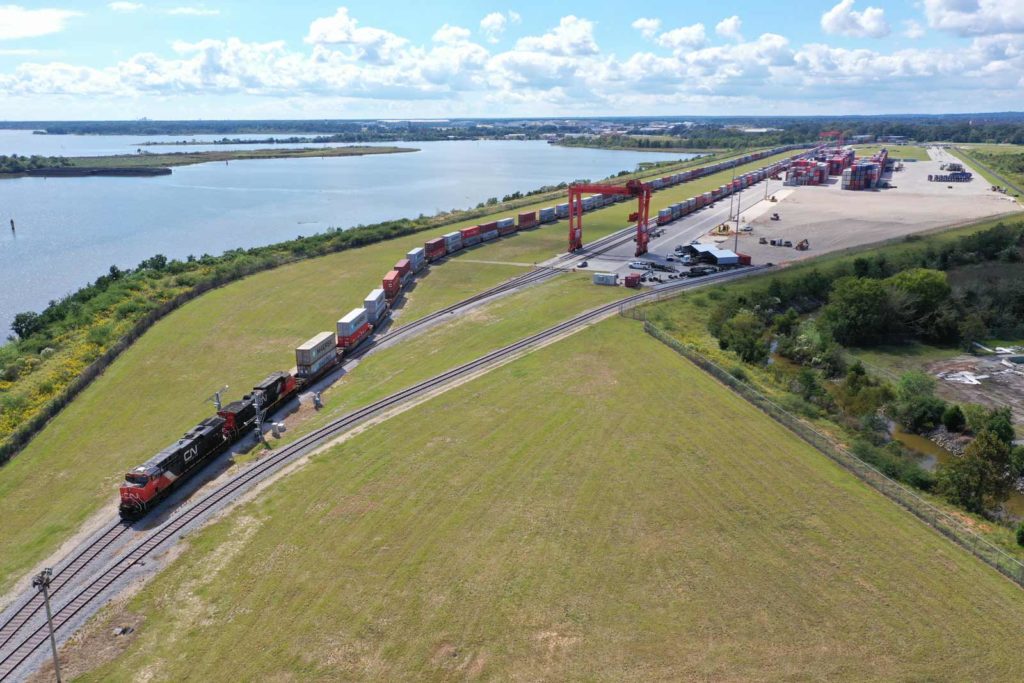
Intermodal Briefs: Port of Baltimore, APM Terminals Mobile
Written by Carolina Worrell, Senior Editor
The now weekly E-Commerce Baltimore Express service will increase ship sizes by nearly 50%.
ZIM Shipping Lines will increase service frequency and ship size at the Port of Baltimore. Also, APM Terminals Mobile targets U.S. Southeast and Midwest logistics growth.
Port of Baltimore
Maryland Gov. Wes Moore announced Feb. 9 that ZIM Shipping Lines is doubling its service to the state, increasing its E-commerce Baltimore Express frequency from bi-weekly to weekly, beginning at the end of the month. ZIM will also increase the size of its ships coming into the Port of Baltimore by nearly 50%—first utilizing 6,000 twenty-foot equivalent unit (TEU) container vessels, and eventually 8,000 TEU container ships.

“The Port of Baltimore is one of the most productive ports in the nation and one of Maryland’s top economic generators,” said Gov. Moore. “When one of the leading container shipping companies in the world increases its business here, it’s a reflection of the maritime industry’s strong confidence in both Maryland’s Port and Maryland’s workers.”
According to a release from the Office of the Governor, Port of Baltimore, which is served by CSX and Norfolk Southern (NS), currently generates about 15,300 direct jobs, with nearly 140,000 jobs overall linked to port activities. It ranks first among the nation’s ports for volume of autos and light trucks, roll-on/roll-off heavy farm and construction machinery and imported gypsum. It ranks ninth for total foreign cargo value and eleventh among major U.S. ports for foreign cargo handled. Baltimore is the first U.S. port of call for this expanded service.
The Baltimore Express is operated exclusively by ZIM and offers customers the fastest transit time from Asia to Baltimore. The service began last spring between China, Southeast Asia and the U.S. East Coast. ZIM operates a fleet of close to 100 vessels with significant international container market share. The firm’s global footprint includes Transpacific, Cross Atlantic, Cross Suez, Intra-Asia, and Latin America trade lanes.
The upgraded around-the-world weekly service will use the Panama and Suez canals, with a route traveling from Jakarta, Indonesia; Laem Chabang, Thailand; Cai Mep, Vietnam; Yantian, China; Kaohsiung, Taiwan; the Panama Canal; and Kingston, Jamaica before coming to Baltimore. From Maryland, the line follows to Norfolk, New York, Boston, the Suez Canal and Kaohsiung. The call at Kingston will enhance access to goods from Africa.
“This is great news for the Port of Baltimore,” said Maryland Port Administration and Port of Baltimore Executive Director William P. Doyle. “ZIM has excelled in utilizing our existing rail network to bring cargo into the Midwest. With our ultra-large, Neo-Panamax cranes and our incredible network of regional distribution, fulfillment, and sorting centers, the future has never been brighter for the container business in Baltimore.”
Baltimore is a prime gateway for goods heading to the e-commerce market and for cargo sent to the Midwest via rail. Maryland’s Port has handled nearly 100 “ad hoc” ship calls—including extra loaders from ZIM—during recovery from the pandemic. Ad hoc ships are vessels diverted to Baltimore that were not on a regularly scheduled service call.
According to Doyle, the Port of Baltimore’s rising container business will be “further buoyed” by expansion of the CSX-owned Howard Street Tunnel in Baltimore, which is underway and scheduled to be completed in 2025. The expanded tunnel will accommodate double-stacked container rail cars traveling to and from the port, clearing a longtime hurdle and providing the East Coast with seamless double-stack capacity from Maine to Florida, as well as the ability to send double-stacked containers by rail into the Ohio Valley and on to Chicago. The project involves clearance improvements in the 127-year-old tunnel and at 21 other locations between Baltimore and Philadelphia.
The Howard Street Tunnel project benefits from public-private investment, including from the federal government, Maryland and CSX. The project is expected to increase the port’s business by about 160,000 containers annually, as well as generate about 6,550 construction jobs and an additional 7,300 jobs from the increased business.
APM Terminals Mobile
APM Terminals Mobile announced Feb. 14 that it will invest $60 million in doubling its rail expansion capacity for customers in response to demand for more supply chain gateway options and inland rail logistics. Additional tracks, rail yard storage space and improved access from the berth to the railyard are planned.
The improvements, APM Terminals Mobile says, are designed to “enhance productivity, safety and supply chain speed to the market.”

“Our customers are looking for expanded options for their supply chains, so we are focusing on faster connections to rail providers into inland markets,” said Head of APM Terminals Americas Leo Huisman
The company’s operational focus, Huisman says, is based on vessels, which can arrive at any hour and can start port operations immediately. The exclusive APM Terminals Mobile rail facility, which will take approximately 24 months to complete and increase the total length of working rail track to 12,000 feet, will enable faster rail loading and departures.
APM Terminals Mobile says it is also doubling its container terminal capacity for future growth to be more than one million TEUs in 2025, supported by the Mobile harbor channel deepening and widening project to a depth of 50 feet, which will accommodate the larger vessels entering the global fleet. The harbor improvements, APM Terminals Mobile says, will make Mobile “the deepest harbor in the U.S. Gulf, with no bridges or other height-restrictive infrastructure interfering with access to the terminal. “
“These improvements and our expanded rail facility will ensure customer competitiveness and strengthen Alabama as the preferred logistics corridor,” said Huisman.
As part of the project, the Alabama Port Authority is constructing a roadway fly-over bridge to permit unimpeded railway access to-from the facility, which will enable APM Terminals Mobile to provide “on-dock” rail service. The rail facility will also link APM Terminals Mobile to the future Alabama Port Authority’s Montgomery, Ala. inland port, which is expected to be completed in 2025.



